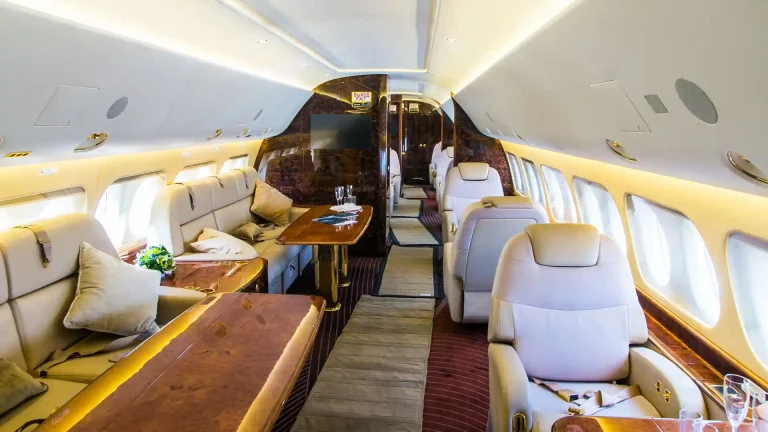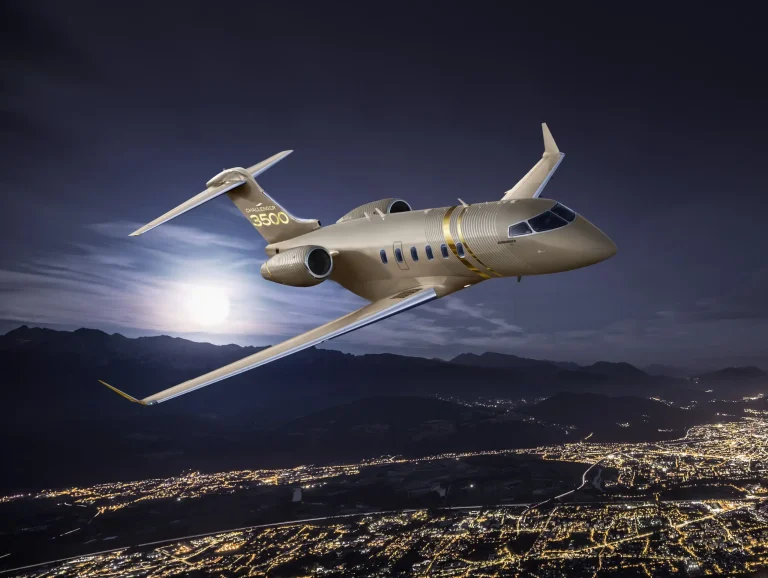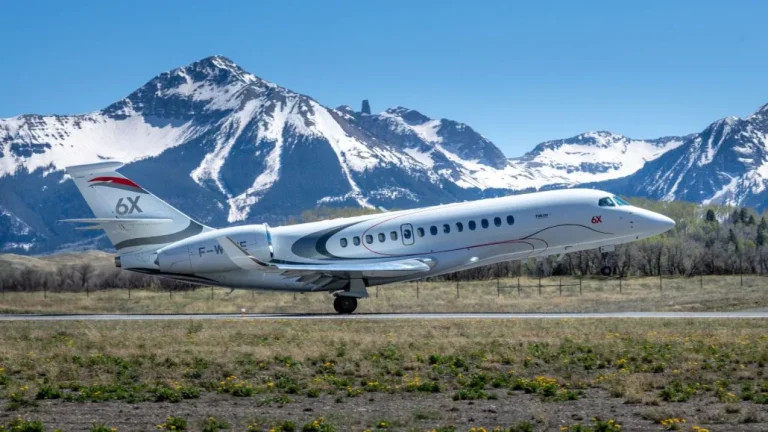Private Jet Charter for Business Travel: Ultimate Guide to Booking & Benefits
Why Private Jet Charter Is Ideal for Business Travel
When time is money, nothing beats the flexibility and exclusivity of a private jet charter for business travel. Unlike commercial flights, chartering a business jet allows you to depart on your schedule, bypass long airport queues, and access smaller, closer airports. This ensures that executives and business teams arrive primed and ready to act.
Moreover, the perception of professionalism and status is elevated when clients, investors, or partners see you arriving in comfort, privacy, and style. In industries where impression matters, this can reinforce your brand and credibility.
From an operational standpoint, private charter offers predictable security, tailored services, and a single point of contact for coordination. Many charter operators now integrate technology apps, dashboards, real-time tracking that make booking and managing private flights as seamless as commercial travel, but with far more control.
In this article, we explore how to use private jet charter for business travel, its benefits, representative real-world jet models, how to choose and book, use cases, and everything you need to know to adopt it for your corporate needs.
Key Benefits of Using Private Jet Charter for Business Travel
Unmatched Time Efficiency & Productivity
One of the primary advantages is saving time:
-
Avoid commercial terminal delays, long check-in, security lines, and transfers.
-
Depart from smaller airports closer to offices or clients that commercial carriers don’t serve.
-
Multi-leg or multi-city itineraries can be handled directly, reducing layovers.
With fewer restrictions, executives can maximize working hours in the air, hold meetings onboard, or rest en route without disruption.
Privacy, Discretion & Confidentiality
Business travel often involves sensitive conversations, strategic planning, negotiations, or confidential documents. On a private jet, your team has:
-
Complete control over who is onboard
-
Secure connectivity and communications
-
Privacy to discuss proprietary or high-stakes matters
This level of discretion is impossible on commercial flights and is particularly valuable in industries like finance, mergers & acquisitions, legal counsel, or high-value negotiations.
Customized Service & Comfort
Charter providers can tailor your in-flight experience:
-
Gourmet catering, meal preferences, or dietary restrictions
-
Custom entertainment, conference setups, office equipment
-
Personalized ground transport coordination
-
Cabin layout and comfort options (sleeping berths, seating reconfiguration)
This ensures each mission feels bespoke and supports your business goals.
Access to More Airports & Flexibility
By flying private, you gain access to thousands more airports than commercial airlines serve. You can:
-
Land at executive terminals or private FBOs (fixed-base operators)
-
Choose the airport nearest your final destination
-
Avoid congested hubs, saving transit time
This flexibility can make remote or secondary business destinations viable under tight schedules.
Reliability & Control Over Disruptions
Commercial flights are subject to cancellations, overbookings, delays, or routing changes. With charter:
-
You control the scheduling and routing
-
You’re less exposed to airline network disruptions
-
The operator manages contingencies proactively
This reliability is crucial for mission-critical travel or high-stakes deadlines.
Aircraft Suitable for Business Jet Charter
Below are five real-world models frequently used in business travel charter operations, with details, features, and use considerations. Each represents a different tier of capability.
1. Gulfstream G650ER

The Gulfstream G650 is a flagship business jet offering ultra-long-range capabilities, impressive speed, and luxurious comfort. It can fly nonstop for over 7,000 nautical miles, which makes it ideal for transcontinental or transoceanic corporate missions.
Features & Benefits:
-
High-speed cruise: reduces flight time
-
Spacious cabin with multiple zones for work, rest, or dining
-
Advanced avionics and connectivity options
-
Excellent reliability and service network
Use-case:
A multinational executive team needs to fly from New York to Singapore nonstop. The G650 makes this possible without fuel stops, allowing leadership to reach the destination rested and ready.
2. Bombardier Challenger 650

The Challenger series is a favorite among charter operators for its balance of range, cabin comfort, and operating cost. It is often used for business routes of medium to long distance.
Features & Benefits:
-
Wide, comfortable cabin with standing headroom
-
Efficient performance across many routes
-
Good support network in many regions
-
Capacity for ~8–12 passengers with full amenities
Use-case:
A mid-sized management team travels from London to Dubai. The Challenger 650 offers the ideal mix of comfort and efficiency to complete the trip in one hop with onboard meeting space.
3. Embraer Praetor 600

Embraer’s jets are common in business aviation due to their modern design and cost efficiency. The Praetor 600, for instance, offers strong range and cabin flexibility.
Features & Benefits:
-
Adequate range for transcontinental missions
-
Efficient fuel use and maintenance economics
-
Quiet, comfortable cabin suited for executive work or rest
-
Good connectivity and avionics systems
Use-case:
An investment firm needs to travel between São Paulo and Miami. The Praetor 600 can perform that mission comfortably while allowing executives to continue work en route.
4. Cessna Citation XLS

Smaller jets such as the Citation family are ideal for regional or shorter corporate legs. They offer lower costs and quick turnarounds.
Features & Benefits:
-
Cost-effective hourly rates
-
Ability to use shorter runways near business hubs
-
Adequate range for intra-region business sectors
-
Comfortable, though more compact cabins
Use-case:
A technology CEO travels between San Francisco and Los Angeles for back-to-back meetings. The Citation helps maximize time and minimize connection hassles.
5. Dassault Falcon 8X

Falcon jets are known for performance, comfort, and versatility, particularly on long missions with challenging routing.
Features & Benefits:
-
Tri-engine reliability
-
Superb climb performance, enabling more direct routes
-
Luxurious cabins with multiple zones
-
Extensive global support network
Use-case:
A global consulting firm needs to tour clients across South America, Europe, and Asia. The Falcon 8X can handle long legs with efficiency and comfort.
Use Cases & Problems Solved by Private Jet Charter in Business Travel
Problem: Tight, Multi-City Itinerary with Same-Day Meetings
Solution: Chartering gives you the flexibility to sequence flights directly and cut layover time. For example, a team might fly LA-Chicago in the morning, hold a meeting, then proceed to New York in the afternoon something often impossible on commercial schedules.
Problem: Remote Offices or Project Sites Without Commercial Access
Solution: Many industrial or mining corporations operate in locations without large airports. A chartered jet can land at regional airstrips or private fields, ensuring leadership visits such sites with minimal ground travel.
Problem: Confidential Board Visits or M&A Negotiations
Solution: Onboard privacy is critical. A private charter eliminates the risk of leaks, unintended observers, or disruptions, enabling controlled, secure discussion environments.
Problem: Last-Minute Changes & Scheduling Shocks
Solution: Charter operators can adapt routes or timings as business conditions change. If a deal delays a departure, you can adjust without losing airline connectivity. This agility protects your schedule.
Problem: Optimizing Time for Global Leadership
Solution: For executives traveling between global offices, the ability to rest, work, or hold high-level sessions en route is invaluable. Charter jets allow in-flight meetings, full privacy, and better control over fatigue and performance.
How to Choose & Book a Private Jet Charter
Step 1: Define Your Mission Requirements
-
Number of passengers
-
Route(s) & distance
-
Schedule flexibility or fixed time
-
Onboard service needs (catering, connectivity, layout)
-
Ground handling and transport
Step 2: Evaluate Aircraft Options
Using the examples above, match your mission:
-
Short intraregional: Citation, LX
-
Medium-to-long: Challenger, Praetor, Falcon
-
Ultra-long-range: Gulfstream G650, Falcon 8X
Step 3: Choose a Reliable Charter Provider
Look for:
-
Safety certifications, audits, insurer reports
-
Transparent pricing (hourly rates, repositioning, fees)
-
Global operational reach and support
-
Reputation and references
-
Technology-enabled booking & tracking
Operators like Paramount Business Jets offer global fleet access and transparent quotes. XO offers instant booking across 2,000+Wheels Up provides flexible access with no long-term commitments. Stratos Jets emphasizes safety and custom charter management.
Step 4: Request Quote & Compare
Ask providers to break down costs:
-
Hourly aircraft rate
-
Repositioning or deadhead costs
-
Fuel, catering, handling, landing & navigation fees
-
Crew overnight and other miscellaneous charges
Compare the total all-inclusive flight cost rather than just hourly rates.
Step 5: Book & Coordinate
Once selected:
-
Share full itinerary and client preferences
-
Coordinate ground transport, catering, customs/immigration
-
Use provider’s scheduling tools or app to monitor the flight
-
Confirm backup plans (crew rest, alternate airports, weather)
Many operators include a dedicated flight advisor to manage these logistics.
Tips to Maximize ROI & Lower Costs
-
Use Empty-Leg Flights: Charter providers often reposition aircraft empty, offering discounted legs.
-
Group Travel Consolidation: Combine teams into one aircraft rather than multiple charters.
-
Membership / Jet Cards: Prepaid programs often give better rates and priority access.
-
Book in Advance for Peak Routes: Reduces repositioning costs and scarcity surcharges.
-
Negotiate Ground Services: Sometimes you can bundle handling or catering under your contract.
By deploying these levers, the net cost per executive may approach high first-class tickets in some cases while delivering vastly better experience and efficiency.
Frequently Asked Questions
Q1: How much does a private jet charter for business travel cost?
A: Costs vary widely depending on the aircraft class, route, demand, positioning, and services. Light jets might run USD 2,000–4,000 per flight hour; midsize or long-range jets typically cost USD 5,000–10,000+per hour. Repositioning, overnight crew, landing fees, catering, and services add to this. Some operators provide bundled all-inclusive quotes to simplify.
Q2: Can private jet charters fly internationally?
A: Yes. Many business jets are certified for international flights, with required range, overflight permits, customs/immigration coordination, and support at international airports. Charter operators handle all logistics, but you need to allow lead time for permits and clearances.
Q3: Is private jet charter tax deductible for business travel?
A: In many jurisdictions, yes if the flight is purely for business purposes, necessary to company operations, and properly documented. However, tax rules vary by country, and personal use must be distinguished. Consult tax counsel or aviation accountants to ensure compliance and proper reporting.






